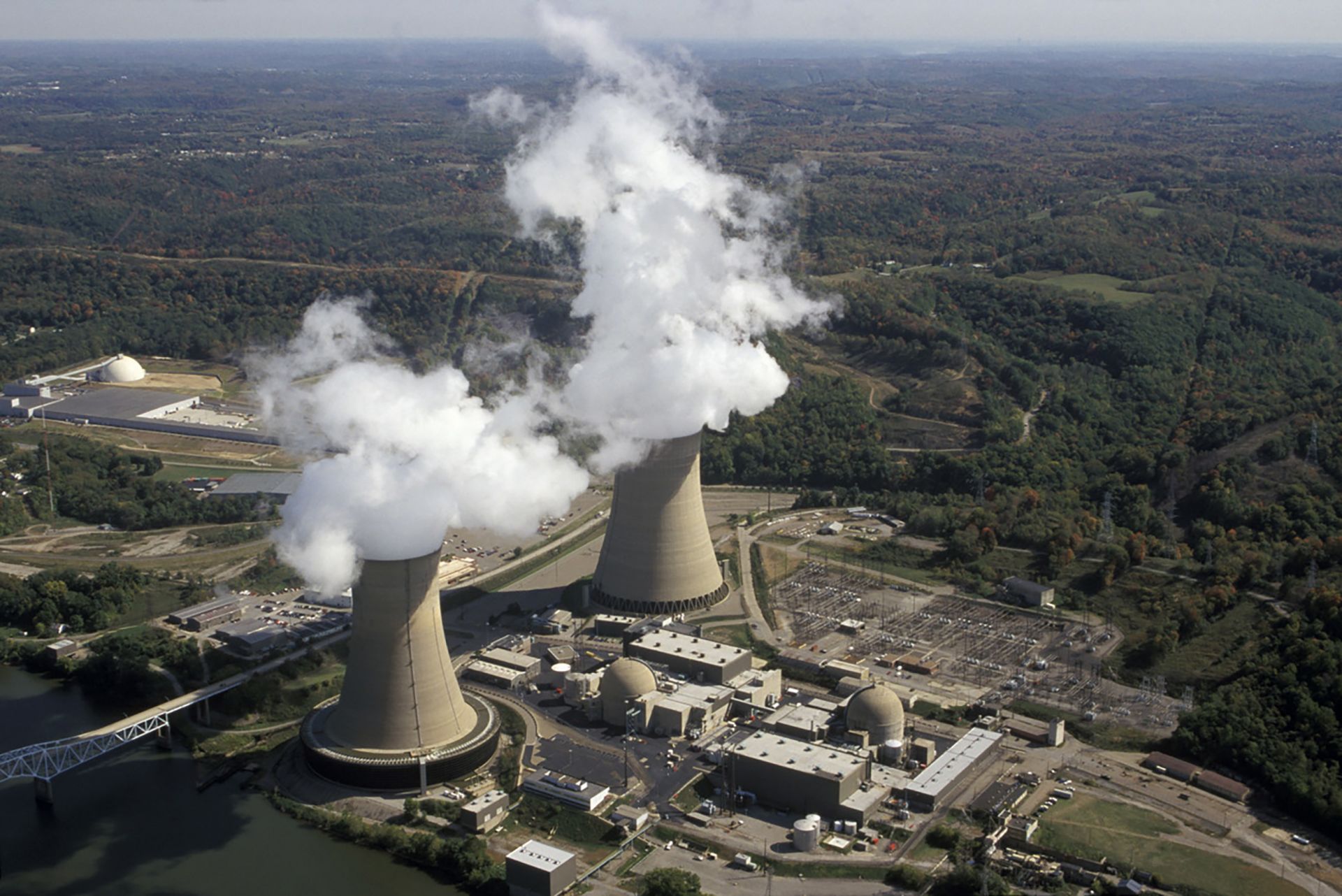The site in Piketon, Ohio, where Oklo plans to deploy two microreactors under an agreement with Southern Ohio Diversification Initiative. (Photo: Oklo)
Oklo Inc. and Centrus Energy announced a new memorandum of understanding on August 28 to support the deployment of Oklo’s microreactor design, dubbed Aurora, near the Piketon, Ohio, site where Centrus plans to operate a high-assay, low-enriched uranium (HALEU) enrichment demonstration under contract to the Department of Energy by the end of the year.
Diablo Canyon nuclear power plant. (Photo: PG&E)
A California court has dismissed a lawsuit brought in April by Friends of the Earth (FOE), an inveterate enemy of nuclear power, to derail last year’s state-supported plan to keep the two-unit Diablo Canyon plant running past 2025.
Work crews remove old infrastructure near the Hanford Site’s Cold War–era PUREX plant. (Photo: DOE)
Demolition is underway on several former chemical storage tanks and associated infrastructure near the Plutonium Uranium Extraction (PUREX) plant, the final and most advanced chemical separations facility at the Department of Energy’s Hanford Site.
The project is expected to be completed by the end of September.
Executives from Westinghouse and Slovenské Elektrárne met in the Slovakian capital of Bratislava to sign the agreement to license and supply VVER-440 fuel assemblies. From left are Aziz Dag, senior vice president and managing director of Westinghouse Electric Sweden; Lukáš Maršálek, deputy director for the accounting, finance, and control department of Slovenské Elektrárne; Tarik Choho, Westinghouse president of nuclear fuel; and Branislav Strýček, director general of Slovenske Elektrárne. (Photo: Westinghouse)
In the latest example of Europe’s move away from its dependence on Russia for VVER reactor fuel, Westinghouse Electric Company on Friday signed a long-term agreement with Slovakia’s nuclear power plant operator, Slovenské Elektrárne, to license and supply VVER-440 fuel assemblies.
March 1, 2021, 3:01PMUpdated August 25, 2023, 3:21PMNuclear NewsJohn Fabian The Fukushima Daiichi nuclear power station site. Image: Courtesy of TEPCO.
Earlier this week, Japan announced its intention to move ahead with its plan to discharge re-treated, diluted tritiated wastewater from the damaged Fukushima Daiichi Nuclear Power Plant into the ocean. This plan has been a topic of discussion--and for many a source of contention--since 2013. After a decade of talks, and with the endorsement of nuclear scientists, experts, and organizations around the globe, the time has come to act. By following safety standards in place and endorsed by the IAEA, the release of wastewater will pose no threat to the public or the environment.
The article below was originally published in the March 2021 issue of Nuclear News. (Also included in that issue is a great review article from Lake Barrett outlining the current status of the decontamination and decommissioning going on at Fukushima .) That month marked 10 years since the Tōhoku earthquake and tsunami devastated Japan and crippled the Fukushima plant. The words that follow remain timely, since various news outlets continue to report on the dangers of Fukushima's wastewater without providing context to the Japanese plan to discharge it.
The Beaver Valley nuclear power plant. (Photo: NRC)
The Department Justice earlier this week filed comments with the Federal Energy Regulatory Commission regarding Vistra Corporation’s proposed acquisition of Energy Harbor, the Ohio-based owner and operator of the Beaver Valley, Davis-Besse, and Perry nuclear plants. Echoing misgivings raised in June by PJM Interconnection’s market monitor Monitoring Analytics regarding the possible exercise of undue market power as a result of the deal, the DOJ Antitrust Division’s 16-page document urges FERC to carefully review the proposal to ensure it will not substantially lessen competition and increase wholesale electricity prices in the PJM region.
Taking part in the Environmental Management Disposal Facility groundbreaking, from left, were Steve Arnette of Jacobs; Mark Whitney of Amentum,; Wade Creswell, a Roane Co., Tenn., executive; Brent Booker of the Laborers’ International Union of North America; Kevin Adkisson of North America’s Building Trades Unions; Jeaneanne Gettle of the EPA; Lt. Gov. Randy McNally; David Salyers of TDEC; Ken Rueter of UCOR; Jay Mullis of OREM; U.S. Rep. Chuck Fleischmann; and DOE-EM’s William “Ike” White. (Photo: DOE)
National, state, and local leaders joined the Department of Energy’s Oak Ridge Office of Environmental Management (OREM) and its lead cleanup contractor, United Cleanup Oak Ridge (UCOR), earlier this month to celebrate the groundbreaking for a new on-site disposal facility at the Oak Ridge Reservation in Tennessee.
Watch a video highlighting the Environmental Management Disposal Facility groundbreaking ceremony here.
A cutaway image of the BWRX-300. (Image: GE Hitachi Nuclear Energy)
The Canadian government continued advancing its small modular reactor action plan on Saturday with the approval of up to C$74 million (about $54.6 million) in federal funds for SMR development in Saskatchewan, led by the province’s main electricity provider, SaskPower.
A reactor operator at MURR works with a sample can from the reactor pool. (Photo: University of Missouri)
On April 10, the University of Missouri (MU) took its first formal step toward building NextGen MURR when school officials issued the request for qualifications for the project. The RFQ is a solicitation for interested companies to offer the design, engineering, licensing, environmental, and developmental services that are needed for NextGen MURR, planned to be larger and more capable than the school’s existing University of Missouri Research Reactor (MURR)—which itself has been the most powerful research reactor and most intense neutron source on any U.S. campus since it began operating in 1966.
Texas Gov. Greg Abbott (right) talks nuclear energy at UT-Austin on August 16. With Abbott are X-energy chief executive officer Clay Sell (left) and Dow chair and CEO Jim Fitterling. (Photo: Office of the Texas Governor)
Texas Gov. Greg Abbott sat down with X-energy chief executive officer Clay Sell and Dow chair and CEO Jim Fitterling last week for a “fireside chat” at the University of Texas–Austin on the role of nuclear energy and technology in the state.








.jpg)






